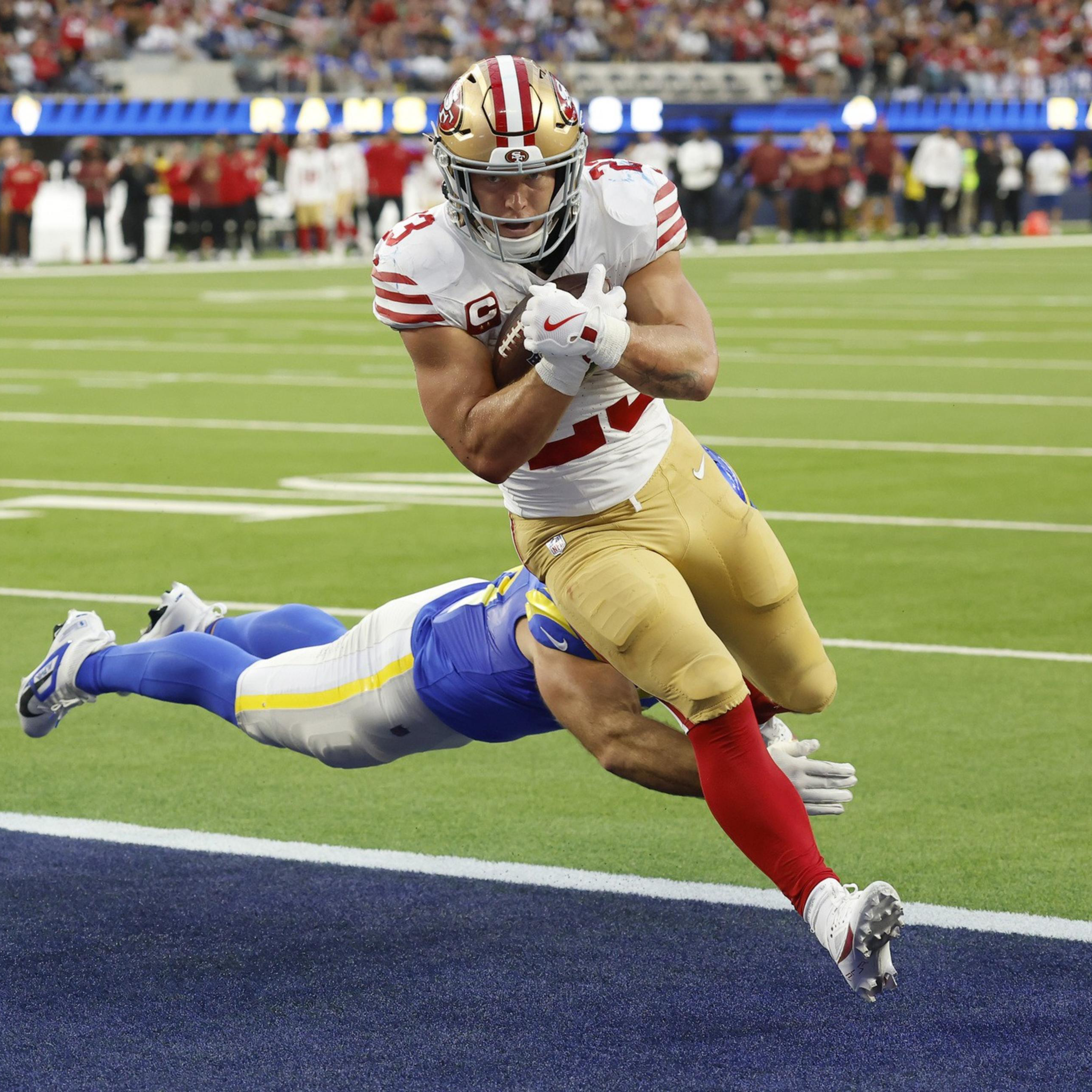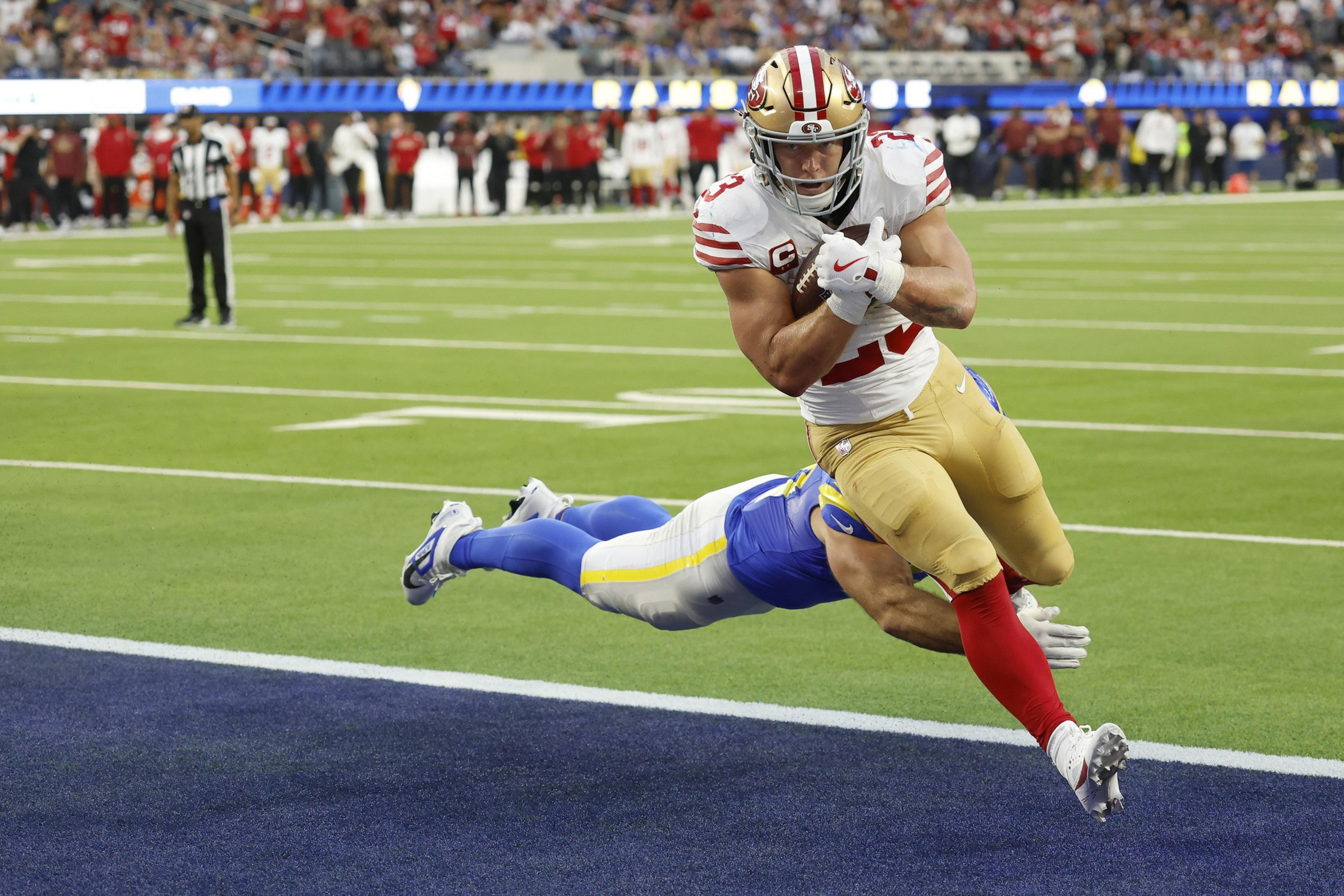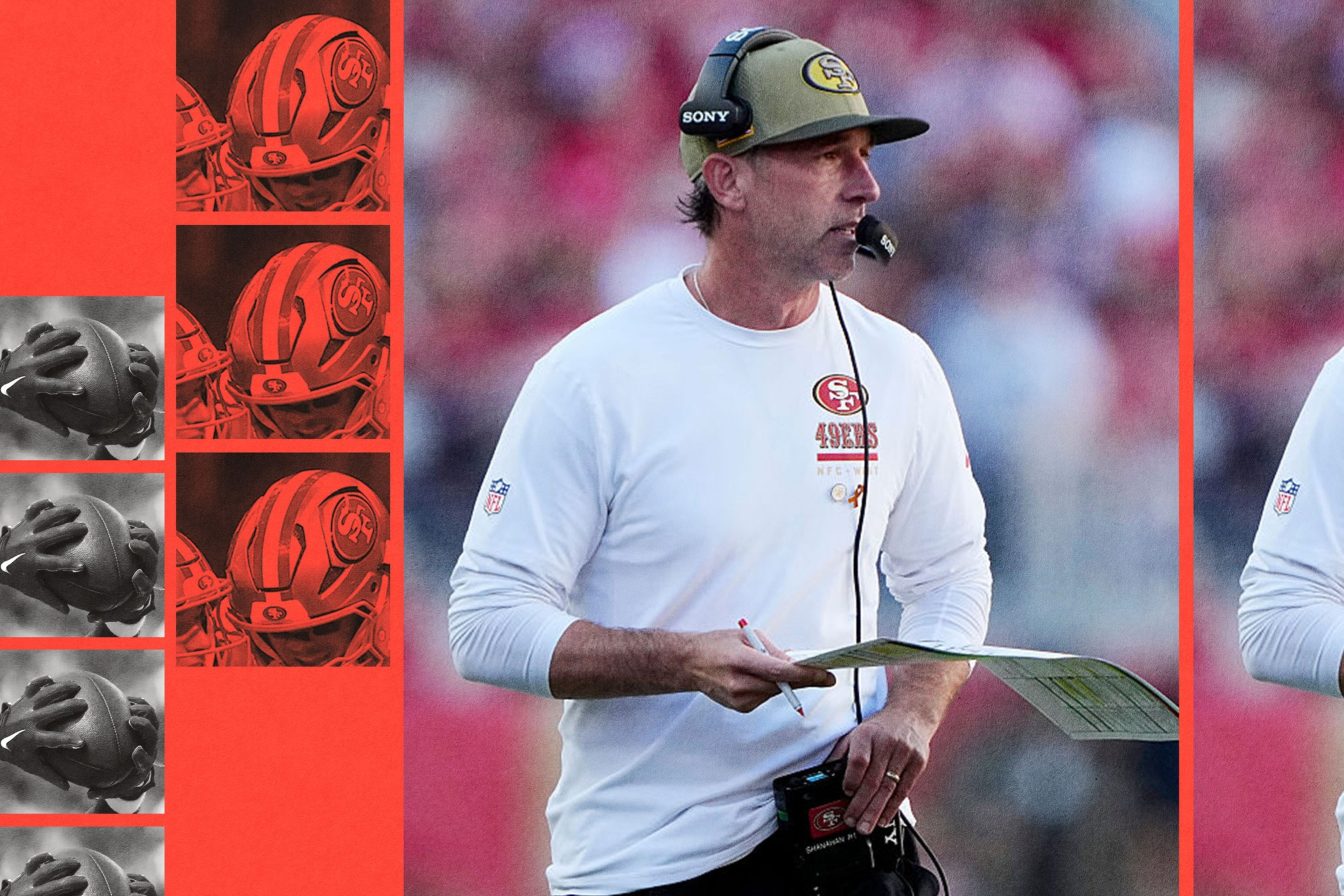Want more ways to catch up on the latest in Bay Area sports? Sign up for the Section 415 email newsletter here and subscribe to the Section 415 podcast wherever you listen.
Brace yourselves. Here comes the unfathomable statistical story of these 2025 49ers.
They’re the first team since 1932 to go 12 straight games without an interception (the drought extends back to November 2024). They’re also the first team since at least 1940 (opens in new tab)to have not logged a pick or a rushing touchdown through five games.
Yet the 49ers are also owners of the best record in football at 4-1.
If that sounds like a highly improbable confluence — it is! After their latest victory over the Los Angeles Rams, it was revealed that — based on the game’s advanced numbers (opens in new tab) — the 49ers had only a 2.2% post-game win probability. In other words, if the game were replayed repeatedly and the teams produced the same key stats, the Rams would be expected to win 97.8% of the time.
But the 49ers turned a tiny window into a victory and, a quarter of the way through the regular season, have a firm blueprint for how they can seriously contend for the Super Bowl. The key, obviously, is a return to health.
Safety Malik Mustapha, who allowed only seven catches over 409 cover snaps before tearing his ACL in the final game of his rookie season, returned to practice Monday. The 49ers have three weeks to activate him from the physically unable to perform (PUP) list.
Mustapha is one of the many scheduled returnees who can help the team attain better positioning on this graph, which charts offensive efficiency on the X-axis and defensive efficiency on the Y-axis.
Other near-term returnees should include tight end George Kittle and left guard Ben Bartch, both of whom were seen running off to the side of the field during Monday’s practice. Timetables on quarterback Brock Purdy and receivers Ricky Pearsall and Brandon Aiyuk are murkier, but the gist of the strategy remains constant: As players return, the 49ers will aim to push their logo further up and to the right on that graph above.
Let’s zoom in further, starting with a closer inspection of the offense before dissecting the defense later this week.
Quarterback: It takes two
Health is clearly a concern. Purdy (toe) and backup Mac Jones (knee) are dealing with injuries. But those issues only underscore the value of the 49ers’ 1-2 QB punch, which might be the strongest in the NFL. (The quarterback room of Matthew Stafford and Jimmy Garoppolo in L.A. is also very good.)
Purdy, who ranks No. 9 in expected points added (EPA) per play, has been more efficient (Y-axis) than Jones, No. 12. But what’s remarkable is the fact that the 49ers have a second QB knocking on the door of top-10 efficiency.
That’s happening even amid the slew of offensive injuries. Purdy, Jones, and coach Kyle Shanahan deserve major credit. They’ve driven the most important position through huge adversity. Shanahan has tailored game plans to each QB’s style: Purdy is more explosive thanks to his mobility, while Jones is best when releasing the ball quickly to his first read.
Running issues
Who are these 49ers?
Their ground game ranks dead last in the NFL, averaging just 3.1 yards per carry. They’re also leading the league with more than 40 pass attempts and 290 pass yards per game.
Nearly 75% of Christian McCaffrey’s yards are coming after contact, which highlights the 49ers’ blocking struggles up front. But notice that Philadelphia star Saquon Barkley, who’s averaging just 3.2 yards per carry, is in an even worse position than McCaffrey above.
McCaffrey’s excellence in the receiving game, documented below, suggests that it isn’t he who has lost a step. Rather, the 49ers seem to have significant perimeter blocking issues without Kittle and without consistent health at the receiver position. That’s a problem, especially because opposing defenses have acknowledged the 49ers’ run-first reputation by looking to suffocate the ground game.
Thankfully for the 49ers, they’ve demonstrated the offensive adaptability to survive with heavier reliance on the pass game.
But what about the O-line?
Is it a treasure or is it trash?
The 49ers were actually better up front than outsiders gave them credit for in 2024. It’s key to consider that O-line play across the entire NFL is being outpaced by the athleticism of defensive lines, so any team that’s passing a lot is bound to allow some pressure.
So relative to other O-lines, the 49ers have not been bad. They again rank No. 14 in ESPN’s pass-block win rate. But they do have a decidedly weak spot: left guard, where rookie Connor Colby is filling in for the injured Ben Bartch and scoring in only the 8th percentile among qualifying guards in Pro Football Focus’ pass-blocking grade. That’s given Trent Williams more cleanup work at left tackle and is likely part of the reason the 37-year-old star has dipped to the 61st percentile this season.
In general, the 49ers have been decently sturdy in pass protection at both tackle spots but below average across the interior. Bartch’s return, expected this month, should help that.
And perhaps Dominick Puni, who injured his knee in the preseason and hasn’t scored as highly as he did during his rookie season, will play his way into better form. That can help both the run and the pass game.
But remember, Kittle’s return — because he gives the 49ers such a leverage advantage at the line of scrimmage — may be the ultimate force multiplier for the O-line, even though he’s a tight end. It’s all connected.
Receiving distribution
Take a long, hard look at this division of receiving efficiency now — because the 49ers hope that it’ll look very different by the end of the season.
Yards per route run, tallied by PFF, is the best measure of receiving efficiency within the context of an offense, because it also factors in the total number of times a receiver is deployed on a pass pattern.
Yes, the fact that McCaffrey’s YPRR total isn’t far from wideout Ricky Pearsall’s is wild. McCaffrey is on pace to shatter the 1,000-yard mark as a receiver.
But when the 49ers have roared as an elite offense in the past, they’ve had three different targets registering over 2.0 YPRR — with McCaffrey, playing the role of safety valve, a little under that average. The top-heavy division between Pearsall and McCaffrey is a result of a less explosive pass offense (the 49ers have been intentionally hammering check downs with other weapons missing) and emergency dependence on the running back in the pass game.
So, that’s the next step for the 49ers. They have to see more from their wide receivers. They’ll look to return Pearsall and Jauan Jennings, further integrate Demarcus Robinson into the mix, and eventually welcome back Brandon Aiyuk.
If most of that happens, and if Purdy can work back into decent toe health to be the explosive distributor he’s been for more than three seasons, the 49ers will transform that table above by season’s end — and perhaps their run game will click as a result, too.




